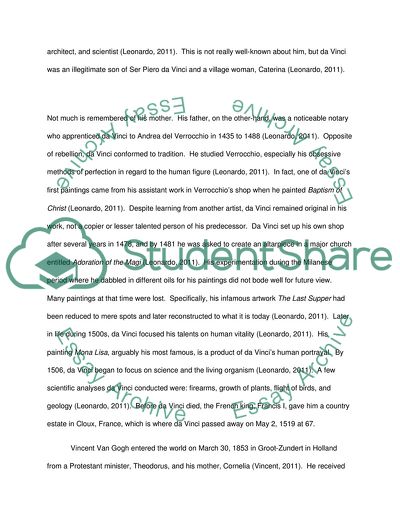Cite this document
(Lives and Artwork of the Artists Leonardo da Vinci and Vincent Van Gogh Report Example | Topics and Well Written Essays - 1750 words - 5, n.d.)
Lives and Artwork of the Artists Leonardo da Vinci and Vincent Van Gogh Report Example | Topics and Well Written Essays - 1750 words - 5. https://studentshare.org/visual-arts-film-studies/1752535-a-world-of-art
Lives and Artwork of the Artists Leonardo da Vinci and Vincent Van Gogh Report Example | Topics and Well Written Essays - 1750 words - 5. https://studentshare.org/visual-arts-film-studies/1752535-a-world-of-art
(Lives and Artwork of the Artists Leonardo Da Vinci and Vincent Van Gogh Report Example | Topics and Well Written Essays - 1750 Words - 5)
Lives and Artwork of the Artists Leonardo Da Vinci and Vincent Van Gogh Report Example | Topics and Well Written Essays - 1750 Words - 5. https://studentshare.org/visual-arts-film-studies/1752535-a-world-of-art.
Lives and Artwork of the Artists Leonardo Da Vinci and Vincent Van Gogh Report Example | Topics and Well Written Essays - 1750 Words - 5. https://studentshare.org/visual-arts-film-studies/1752535-a-world-of-art.
“Lives and Artwork of the Artists Leonardo Da Vinci and Vincent Van Gogh Report Example | Topics and Well Written Essays - 1750 Words - 5”. https://studentshare.org/visual-arts-film-studies/1752535-a-world-of-art.


